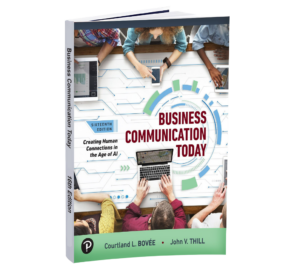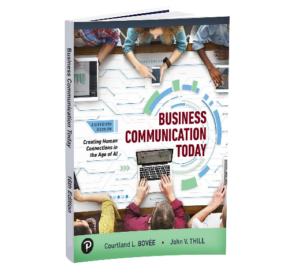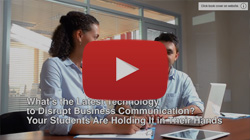Read more
Business Communication Instruction
Keep your course current and relevant to today's students by using the latest techniques and
strategies for business communication and business writing instruction. Read More
Beyond Basic Bots: Kickfin’s AI Strategy Redefines Business Communication
 n the fast-paced world of hospitality, the end of a long shift traditionally meant one more tedious task: tip distribution. Enter Kickfin, an Austin-based startup that's transforming this nightly ritual with a seamless digital solution. Their platform enables instant tip payments directly to employees' bank accounts, eliminating the safety risks of cash handling and the frustrations of delayed prepaid card systems.
n the fast-paced world of hospitality, the end of a long shift traditionally meant one more tedious task: tip distribution. Enter Kickfin, an Austin-based startup that's transforming this nightly ritual with a seamless digital solution. Their platform enables instant tip payments directly to employees' bank accounts, eliminating the safety risks of cash handling and the frustrations of delayed prepaid card systems.
But Kickfin's innovation extends beyond just digital payments. Under the leadership of VP of Operations Larisa Thomas, the company has embraced AI technology to solve another critical challenge in the hospitality industry: 24/7 customer support. Recognizing that restaurants often need assistance during unconventional hours, Kickfin implemented Forethought's GenAI-based support system to provide round-the-clock assistance without the operational complexity of staffing night shifts.
What makes Thomas's approach particularly noteworthy is her perspective on AI implementation. Rather than viewing it merely as a cost-cutting measure, she sees it as a pathway to service enhancement. The AI system doesn't just process more tickets faster – it handles customer interactions with consistent patience and professionalism, even in high-stress situations. This approach has led to thousands of successfully resolved support queries, with the system becoming more sophisticated over time.
Thomas's vision for AI in customer service challenges traditional metrics. Instead of focusing solely on quantitative measures like call volume, she emphasizes the importance of emotional intelligence and customer satisfaction. This holistic approach reflects a broader truth about technology in business: the goal isn't just to work faster, but to work better, creating more value for both employees and customers.
NOTE: This is an extract of the chapter-opening vignette that appears exclusively in Chapter 10 of Business Communication Today, 16th Edition, by Bovee and Thill (Pearson).
Business communication instructors and their students can step into the future of business communication with the new, groundbreaking 16th edition of Business Communication Today by Courtland Bovee and John Thill—where artificial intelligence meets time-tested principles. For the first time, artificial intelligence (AI) is seamlessly integrated into every chapter, making this the first business communication textbook on the market to offer comprehensive AI coverage.
Neuroscience Meets Business Communication Education
This text integrates research-based principles from neuroscience to enhance learning. This innovative approach aligns with how the brain learns, retains, and applies information, transforming how business communication is taught and mastered. Imagine students who don’t just memorize concepts but confidently apply them. With engagement soaring and retention deepening, your classroom is where communication skills are mastered for life. Give your students the neuroscience advantage. Join leading colleges and universities already seeing remarkable results with our neuroscience-based approach.
The Mystery of the Phantom Agreement: Unmasking the Hidden Meaning Behind “I’ll Think About It”
 It’s a phrase uttered in boardrooms, sales calls, and casual conversations alike—“I’ll think about it.” On the surface, it suggests consideration, an open-ended decision still in progress. But beneath its polite exterior, an unspoken reality lurks: in most cases, it really means “probably not.”
It’s a phrase uttered in boardrooms, sales calls, and casual conversations alike—“I’ll think about it.” On the surface, it suggests consideration, an open-ended decision still in progress. But beneath its polite exterior, an unspoken reality lurks: in most cases, it really means “probably not.”
How did these five words become the linguistic equivalent of a ghostly handshake—an agreement that exists in name only? What unseen psychological forces transformed this once-neutral phrase into a coded rejection?
The answer lies in our innate discomfort with direct refusal. Humans are social creatures, wired to avoid conflict and preserve relationships. Saying “no” outright can feel too final, too confrontational. Instead, people lean on ambiguity, choosing socially acceptable deferrals that soften the blow while leaving the door slightly ajar.
But here’s where the mystery deepens: why do we all seem to instinctively understand this hidden meaning? Over time, cultural norms and repeated experiences have trained us to recognize “I’ll think about it” as a diplomatic dodge—a signal that no further action is likely. It’s a shared secret, an unspoken agreement where both sides know the truth but play along anyway.
And yet, the phantom agreement carries real consequences. In business, it breeds false hope, wasted follow-ups, and prolonged indecision. Deals stall, negotiations drag on, and opportunities vanish into the ether, all because a definitive answer was never given.
So how do we solve this puzzle? By bringing the hidden message to light. Recognizing “I’ll think about it” for what it truly is allows us to cut through ambiguity and encourage more honest conversations. Whether by gently prompting for clarity (“What concerns do you have?”) or offering an easy exit (“Would it be fair to say this isn’t the right fit?”), we can transform vague hesitations into decisive outcomes.
The mystery of the phantom agreement isn’t just about language—it’s about the silent forces shaping our interactions. And once you learn to decode them, you’ll never hear “I’ll think about it” the same way again.
So, the question remains: Will you accept the illusion, or will you uncover the truth?
Read moreAn Instructor Quiz on AI’s Role in Digital, Social, and Visual Media
The rise of digital, social, and visual media has fundamentally transformed how businesses communicate with their audiences and build meaningful connections. To prepare students for success in this fast-paced and ever-evolving landscape, it’s essential that business communication textbooks address the critical skills needed to navigate these mediums effectively. From crafting impactful digital messages to leveraging social platforms and creating compelling visuals, today’s professionals require a robust foundation.
This quiz helps you evaluate whether your current textbook covers the essential AI-driven tools and strategies students need to succeed. Answer the following 20 “yes” or “no” questions to see how your textbook measures up in preparing students for the future of business communication.
1. Does your textbook explain how AI tools optimize email subject lines for engagement and clarity?
2. Does your textbook show how AI automates email drafting and improves tone and readability?
3. Does your textbook include how AI-driven messaging systems enhance collaboration and productivity?
4. Does your textbook highlight how AI analytics help track and improve digital media performance?
5. Does your textbook discuss how AI generates audience-specific digital content efficiently?
6. Does your textbook explain how AI tools assist in creating, scheduling, and managing social media posts?
7. Does your textbook demonstrate how AI analyzes social media engagement metrics to refine strategies?
8. Does your textbook include guidance on using AI for sentiment analysis in social media monitoring?
9. Does your textbook show how AI supports A/B testing to evaluate and improve social media content?
10. Does your textbook explore how AI tools enhance influencer outreach and campaign management?
11. Does your textbook explain how AI generates visual content, such as infographics, tailored to audience needs?
12. Does your textbook demonstrate how AI streamlines the creation of visually appealing slides and presentations?
13. Does your textbook include examples of AI tools that assist with data visualization for reports and presentations?
14. Does your textbook teach how AI can create culturally sensitive and inclusive visual content?
15. Does your textbook explore the role of AI in simplifying video production for digital media?
16. Does your textbook explain how AI tools improve accessibility with features like captions and alt text for visuals?
17. Does your textbook discuss how AI identifies trends and patterns in social media data?
18. Does your textbook highlight ethical considerations of using AI in social media and digital marketing?
19. Does your textbook show how AI personalizes social media responses for customer engagement?
20. Does your textbook provide case studies or examples of AI’s role in creating impactful digital, social, and visual media?
If you answered “no” to any of these questions, it’s time to face reality: your textbook is out of date and failing to keep pace with today’s business communication demands.
In today’s fast-paced, technology-driven landscape, students require a textbook that not only keeps pace with innovation but empowers them to leverage AI as a transformative tool. Imagine the impact of an approach that seamlessly integrates cutting-edge AI concepts into your course, equipping your students with the practical skills and forward-thinking mindset needed to excel in the real world. Elevate your curriculum and set your students apart by preparing them to thrive in an AI-powered future.
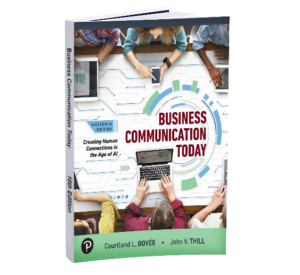 Business communication instructors and their students can step into the future of business communication with the new, groundbreaking 16th edition of Business Communication Today— where artificial intelligence meets time-tested principles. For the first time, artificial intelligence (AI) is seamlessly integrated into every chapter, making this the first business communication text on the market to offer comprehensive AI coverage. Order an examination copy today.
Business communication instructors and their students can step into the future of business communication with the new, groundbreaking 16th edition of Business Communication Today— where artificial intelligence meets time-tested principles. For the first time, artificial intelligence (AI) is seamlessly integrated into every chapter, making this the first business communication text on the market to offer comprehensive AI coverage. Order an examination copy today.
Design for All: How Canva Changed the Face of Digital Communication
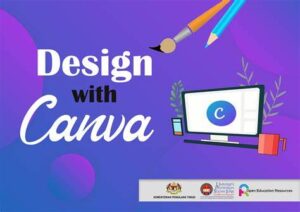 From a student's frustration with complex design software emerged one of technology's most transformative success stories. Melanie Perkins, while teaching graphic design at university in Perth, Australia, observed her students spending entire semesters just learning where buttons were located in professional design programs. This pain point sparked a revolutionary idea: what if design could be accessible to everyone?
From a student's frustration with complex design software emerged one of technology's most transformative success stories. Melanie Perkins, while teaching graphic design at university in Perth, Australia, observed her students spending entire semesters just learning where buttons were located in professional design programs. This pain point sparked a revolutionary idea: what if design could be accessible to everyone?
Along with co-founders Cliff Obrecht and Cameron Adams, Perkins turned this vision into Canva, a platform that has democratized design for the digital age. What began as a modest solution for yearbook creation has exploded into a global phenomenon, with nearly 200 million users across 190 countries creating 15 billion designs in over 100 languages.
Canva's timing couldn't be better, positioning itself at the confluence of two powerful trends reshaping business communication: the dominance of visual content and the rise of artificial intelligence. The platform has become indispensable for professionals across industries, from marketing to human resources, who need to create polished visual materials without traditional design training.
While professional graphic designers remain essential for complex creative work, Canva has pioneered what it calls the "visual economy" – a world where basic design capabilities are becoming as fundamental as email skills in the workplace. Through AI-enabled tools and intuitive interfaces, Canva has transformed design from an exclusive professional skill into an accessible language that anyone can speak, fundamentally changing how we communicate in the digital age.
NOTE: This story about Canva is a summarization of the chapter-opening vignette, Communication Close-Up, that appears exclusively in Chapter 9 of Business Communication Today, 16th Edition, by Bovee and Thill (Pearson). At the end of the chapter is a Communication Challenge that gives students an opportunity to apply their knowledge and skills to a real-world scenario at Canva, enhancing critical thinking and practical application skills while reinforcing the key concepts covered in the chapter.
Business communication instructors and their students can step into the future of business communication with the new, groundbreaking 16th edition of Business Communication Today by Courtland Bovee and John Thill—where artificial intelligence meets time-tested principles. For the first time, artificial intelligence (AI) is seamlessly integrated into every chapter, making this the first business communication textbook on the market to offer comprehensive AI coverage.
Neuroscience Meets Business Communication Education
This text integrates research-based principles from neuroscience to enhance learning. This innovative approach aligns with how the brain learns, retains, and applies information, transforming how business communication is taught and mastered. Imagine students who don’t just memorize concepts but confidently apply them. With engagement soaring and retention deepening, your classroom is where communication skills are mastered for life. Give your students the neuroscience advantage. Join leading colleges and universities already seeing remarkable results with our neuroscience-based approach.
Read moreHow AI Image Generators Are Transforming Business Communication Instruction

A mischievous cat makes a daring escape from a fishmonger’s shop, clutching its prize—a fresh fish gleaming in its jaws. This playful scene captures the potential of AI-generated imagery, blending creativity and realism seamlessly to tell unexpected visual stories.
AI-powered image generation continues to advance, offering cutting-edge tools that transform creative processes across industries. Business communication specialists can now leverage these platforms for various tasks, including content creation and business communication instruction. Some offer their services for free. Below are key developments and innovative tools shaping the current landscape.
Key AI Image Generators
1. DALL-E 3: This version boasts enhanced photorealism and superior text interpretation, integrated into Microsoft’s Designer and Bing Image Creator. It’s ideal for crafting precise visuals that enhance business communication instruction, from presentation graphics to product illustrations.
2. Ideogram: This tool excels in generating both visuals and text-rich images. With its Magic Prompt feature, users can optimize input prompts, making it highly effective for educational settings, such as developing infographics and instructional materials.
3. Craiyon: Known for accessibility, Craiyon offers a free platform that allows quick visual prototyping. It can be a valuable resource for educators looking to create visual aids for classroom activities or business communication instruction sessions.
4. Canva AI: Canva’s AI features facilitate the creation of branded communications. Its templates and image-generation tools streamline content development, making it a go-to for instructors managing social media pages or newsletters.
5. Runway AI: Specializing in video creation, Runway AI empowers business communication professionals to produce polished instructional videos and video presentations, essential for e-learning and digital communication strategies【9†source】.
6. Imagine Art: Focused on creative output, Imagine Art enables users to produce diverse imagery for unique marketing campaigns and instructional presentations, supporting both corporate and educational environments【9†source】.
How AI Image Generators Can Be Used in Business Communication
• Visual Storytelling for Instruction: AI-generated images enhance the delivery of complex topics in business communication instruction by providing visual support that aids comprehension.
• Customized Marketing Campaigns: With tools like Canva AI and DALL-E 3, professionals can develop personalized visuals aligned with brand narratives or seasonal themes.
• Content Development and Social Media: These platforms streamline the creation of blog graphics, infographics, and social media visuals, ensuring a cohesive content strategy.
• Training and Educational Materials: Runway AI and Canva AI are instrumental in producing e-learning modules, instructional videos, and interactive presentations for business communication instruction.
• Rapid Prototyping and Brainstorming Sessions: Ideogram and Craiyon support idea visualization, making them useful in workshops, meetings, and educational settings for concept illustration and mockups.
AI image generation tools offer immense potential for enhancing business communication instruction and engaging with diverse audiences. As the technology evolves, these platforms empower professionals to blend creativity with efficiency, ensuring impactful communication across all channels. By integrating these tools into their work, instructors and communication specialists can create visually compelling and effective educational materials tailored to their audience’s needs.
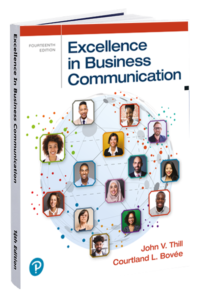
How Excellence in Business Communication Prepares Students for the Age of AI Image Generation
Excellence in Business Communication is an ideal textbook for integrating AI image generation into business communication courses due to its focus on practical skills, emerging trends, and real-world application. This text emphasizes how digital tools enhance communication, aligning perfectly with the use of AI-generated visuals in professional and educational settings. As businesses increasingly adopt AI technologies for content creation, this book ensures students are well-prepared to navigate these innovations.
AI image generators, like DALL-E 3, Canva AI, and Runway AI, offer new ways to create engaging presentations, marketing content, and instructional materials. Excellence in Business Communication encourages students to explore multimodal communication strategies, including visual and digital literacy, fostering the skills necessary to integrate these tools effectively.
The textbook's focus on ethics and responsible communication aligns with discussions on copyright and AI usage, critical issues as students learn to generate and use AI-based content. Through activities that simulate real-world scenarios, the book encourages students to apply AI tools creatively while maintaining professionalism.
By using this text alongside AI generators, students develop both technical proficiency and communication strategies essential in today’s AI-driven environment, ensuring they stay competitive and adaptive in evolving business environments.
Read more
Connecting with Students: How Emotional Intelligence Can Transform Your Business Communication Classroom

Tailored teaching methods empower quiet students through confidence-building exercises.
1. Implementing Emotional Intelligence for Effective Teaching
In today's dynamic business environment, effective communication is no longer merely about conveying information; it's about building relationships, navigating complex interactions, and fostering understanding. Emotional intelligence (EI) has emerged as a critical factor in achieving these goals, particularly in the field of business communication education. This article explores the multifaceted role of EI in teaching business communication, providing insights into its significance, practical applications, and strategies for development. By understanding and implementing EI principles, instructors can cultivate more engaging, supportive, and successful learning environments, preparing students for thriving careers in the business world.
2. Understanding Emotional Intelligence in Education
Emotional intelligence, as defined by Salovey and Mayer (1990), is the ability to perceive, understand, manage, and utilize emotions effectively. It involves being aware of our own emotions, understanding those of others, and using this emotional knowledge to guide our thinking and actions. In the context of teaching business communication, EI enables instructors to navigate their own emotions, effectively understand students' needs, and foster a positive learning atmosphere conducive to effective communication and skill development.
2.1 Key Components of Emotional Intelligence
Drawing from Goleman's (1995) model, five key components of EI are particularly relevant to teaching business communication:
Self-Awareness: Recognizing one's own emotional state, understanding the impact of emotions on behavior, and identifying triggers that influence emotional responses.
Empathy: Understanding others' feelings and perspectives, actively listening to their concerns, and responding with sensitivity and care.
Self-Regulation: Managing one's emotions and behaviors effectively, remaining calm under pressure, and responding constructively to challenging situations.
Social Skills: Building and maintaining healthy relationships, communicating effectively, resolving conflicts constructively, and collaborating effectively in teams.
Motivation: Having a strong internal drive to achieve goals, maintaining enthusiasm and passion for teaching, and inspiring students to strive for excellence.
2.2 The Relevance of EI in Business Communication Education
Research by Jennings and Greenberg (2009) highlights that teachers with higher EI create more supportive classroom environments, leading to improved student outcomes. In business communication courses, where interpersonal skills and effective communication are paramount, the instructor's EI can significantly influence students' learning experiences and future professional success. Students learn not only by absorbing information but also by observing and emulating the communication styles of their instructors.
3. Specific Emotional Skills for Teaching Business Communication
3.1 Self-Awareness
Example: An instructor who is self-aware can recognize their own frustration when students are disengaged and, instead of reacting impulsively, can address the root cause calmly. This might involve reflecting on the lesson plan and adjusting teaching methods to better engage students.
Research Insight: A study by Brackett et al. (2010) found that teachers with higher emotional self-awareness reported less burnout and greater job satisfaction. This highlights how self-awareness can not only benefit students but also contribute to the instructor's own well-being.
3.2 Empathy
Example: A business communication instructor demonstrating empathy when a student struggles with public speaking can offer tailored support, encouraging the student to overcome anxiety through gradual exposure and positive reinforcement. This might involve providing the student with additional practice opportunities, offering feedback in a supportive manner, and helping them develop personalized strategies for managing their anxiety.
Research Insight: Cornelius-White (2007) meta-analysis showed that teacher empathy was associated with increased student participation and motivation. Empathy creates a safe space for students to learn and grow, fostering a more inclusive and productive classroom environment.
3.3 Self-Regulation
Example: During a heated class debate on a controversial business ethics case, an emotionally intelligent instructor remains calm, moderating the discussion without bias. They ensure that diverse viewpoints are respected and explored constructively, facilitating a respectful and productive dialogue.
Research Insight: Sutton and Wheatley (2003) review suggests that teachers' ability to regulate their emotions is crucial for creating a positive classroom climate. By managing their own emotions effectively, instructors can create a more harmonious environment where students feel safe to express their ideas and engage in productive discussions.
3.4 Social Skills
Example: Facilitating group work effectively in a business communication course requires strong social skills to resolve conflicts, engage quiet students, and maintain productivity. An instructor might use techniques like role rotation, structured feedback sessions, and conflict-resolution strategies to ensure all voices are heard and contributions are valued.
Research Insight: Zins et al. (2004) compilation of studies demonstrates that social and emotional learning programs improve students' social-emotional skills and academic performance. Investing in social skills development for both instructors and students creates a more collaborative and supportive learning environment.
3.5 Motivation
Example: A motivated business communication instructor engages students by integrating real-world case studies, current events, and relevant industry trends to keep the content exciting and relevant. They might invite guest speakers from industry, organize field trips to local businesses, or encourage students to participate in real-world projects.
 Enterprising instructors elevate business communication courses with real-world insights from visiting experts.[/caption]
Enterprising instructors elevate business communication courses with real-world insights from visiting experts.[/caption]
Research Insight: Kunter et al. (2008) found that teacher enthusiasm was positively related to students' interest and enjoyment in the subject matter. By demonstrating genuine passion and engagement, instructors can inspire and motivate students to develop a deeper understanding and appreciation for business communication.
4. How Emotional Intelligence Improves Teaching Business Communication
4.1 Enhancing Classroom Management
EI helps instructors create a more positive and productive learning environment by:
Recognizing and Addressing Individual Student Needs: By being attuned to student emotions, instructors can identify those struggling and provide tailored support, creating a more equitable and inclusive learning experience.
Diffusing Potential Conflicts Before They Escalate: By developing strong social skills and a sense of empathy, instructors can effectively resolve conflicts constructively, preventing escalation and fostering a more collaborative classroom environment.
Creating a Culture of Respect and Open Communication: When instructors model respectful communication, students are more likely to follow suit. This creates a positive and safe environment for open dialogue, idea sharing, and constructive feedback.
Example: An instructor who perceives a drop in student engagement might introduce interactive exercises or discussions, break down complex concepts into smaller chunks, or utilize technology-enhanced learning tools to re-engage the class rather than continuing with the same lecture format.
4.2 Effective Feedback Delivery
Emotionally intelligent feedback is:
Constructive and Growth-Oriented: Feedback focuses on specific behaviors or skills, offering constructive suggestions for improvement rather than dwelling on shortcomings.
Tailored to Individual Student Needs: Feedback is personalized to address each student's unique strengths, weaknesses, and learning style.
Delivered with Empathy and Respect: Feedback is delivered in a compassionate and respectful manner, recognizing the student's efforts and fostering a supportive learning environment.
Example: Instead of saying, "Your presentation lacked structure," a high-EI instructor might say, "You've got strong points—let's work on organizing them more clearly for maximum impact. What do you think about using a problem-solution format?" This approach is more constructive and encourages the student to actively participate in the improvement process.
4.3 Building Student-Instructor Relationships
Strong emotional connections with students foster a positive learning environment where students feel supported and are more likely to take academic risks.
Example: Instructors who check in with students individually, understand their goals, and encourage open communication build stronger, more trustful relationships. This might involve regular office hours, one-on-one progress meetings, or even informal chats before or after class to build rapport and show genuine interest in their students' well-being and academic progress.
4.4 Navigating Difficult Conversations
EI equips instructors to handle sensitive issues with tact and effectiveness.
Example: When discussing a student's underperformance, an emotionally intelligent instructor might first ask questions to understand if external factors are affecting the student before proposing solutions. They might say, "I've noticed a change in your participation lately. Is everything okay? I'm here to support you if you're facing any challenges." This approach demonstrates empathy and a willingness to help the student overcome any obstacles they may be facing.
5. Developing Emotional Intelligence in Instructors
5.1 Self-Reflection
Keep a Teaching Journal: Regularly record emotional responses, challenging situations, and successful strategies. This practice can enhance self-awareness and identify areas for growth.
Regularly Assess Personal Strengths and Areas for Improvement: Utilize self-assessment tools or seek feedback from peers and mentors to gain a deeper understanding of your own EI strengths and areas for development.
Seek Feedback from Peers and Students: Constructive feedback from colleagues and students can provide valuable insights into your communication style and emotional impact on the learning environment.
5.2 Professional Development
Attend Workshops Focused on EI in Education: Workshops can provide practical strategies and tools to develop EI skills specific to the teaching profession.
Participate in Role-Playing Exercises to Practice EI Skills: Role-playing scenarios can help you develop emotional awareness and practice communication skills in challenging situations.
Engage in Ongoing Learning About EI Through Books, Courses, and Seminars: Continuously expanding your knowledge of EI will enhance your ability to apply these principles in the classroom.
5.3 Peer Collaboration
Establish a Mentoring Program with Experienced, Emotionally Intelligent Instructors: Mentorship can provide valuable guidance and support in developing your EI skills and navigating challenging situations.
Create Opportunities for Peer Observation and Feedback: Observe colleagues who demonstrate strong EI skills and solicit constructive feedback on your own teaching practices.
Form a Professional Learning Community Focused on EI in Teaching: Collaborate with other educators to share ideas, strategies, and resources related to EI in the classroom.
5.4 Mindfulness Practices
Incorporate Meditation or Deep Breathing Exercises into Daily Routine: Mindfulness practices can enhance self-awareness, emotional regulation, and stress management.
Practice Mindfulness During Teaching to Stay Present and Aware: Bring your attention to the moment, responding to students with presence and understanding rather than allowing distractions to cloud your judgment.
Use Mindfulness Apps or Guided Sessions to Develop Consistent Practice: Utilize technology-aided mindfulness tools to support your ongoing practice and integrate mindfulness into your daily life.
6. Benefits of Fostering Emotional Intelligence in Teaching Business Communication
6.1 Improved Student Engagement

Tailored teaching methods empower quiet students through confidence-building exercises.
Example: An instructor who understands individual student challenges can adapt their teaching methods, encouraging quieter students to participate through low-stakes, confidence-building exercises like think-pair-share activities or online discussion boards.
Research Insight: Reyes et al. (2012) found that classrooms with higher emotional climate scores showed higher levels of student engagement. EI contributes to a more positive and supportive learning environment, where students feel valued and are more likely to engage actively in the learning process.
6.2 Higher Student Retention
Example: A business communication instructor who shows concern for student well-being and academic growth helps students feel more connected to the course and the instructor. This might involve regular check-ins, personalized feedback, and creating a supportive class community.
Research Insight: O'Keeffe (2013) review suggests that a sense of belonging and positive student-faculty interactions contribute significantly to student retention. Building strong relationships with students fosters a sense of belonging and support, reducing the likelihood of them dropping out of the course.
6.3 Better Conflict Resolution
Example: When a conflict arises in group work, an emotionally intelligent instructor facilitates a discussion that encourages understanding and cooperation, rather than letting tensions fester. They might use techniques like active listening, perspective-taking exercises, and conflict resolution strategies to help students reach a resolution.
Research Insight: Schonert-Reichl (2017) overview indicates that teachers with higher EI are better equipped to handle classroom conflicts and teach conflict resolution skills to students. EI equips instructors to model effective conflict resolution, empowering students to develop these essential communication skills.
6.4 Enhanced Professional Development
Example: An emotionally intelligent instructor who demonstrates empathy and leadership in the classroom is more likely to be chosen for leadership roles in academic or administrative capacities. They might be asked to lead workshops, mentor new faculty, or contribute to curriculum development.
Research Insight: Wong et al. (2010) study found that EI was positively related to job performance and career advancement in various professions, including education. By developing their EI, instructors not only enhance their teaching effectiveness but also improve their overall professional growth and career prospects.
7. Challenges and Solutions in Implementing EI in Business Communication Courses
7.1 Time Constraints
Challenge: Instructors may feel pressure to cover content, leaving little time for EI development.
Solution: Integrate EI skills into existing lessons. For example, use group projects to teach both business writing and emotional intelligence simultaneously. Incorporate short, focused activities throughout the course to foster self-awareness, empathy, and communication skills.
7.2 Resistance to Change
Challenge: Some instructors or institutions may be skeptical about the importance of EI.
Solution: Share research on the benefits of EI in education and business. Pilot EI-focused teaching methods in one course and compare outcomes with traditional approaches. Demonstrate the positive impact of EI on student engagement, performance, and retention, highlighting the tangible benefits of implementing these principles.
7.3 Lack of Training
Challenge: Many instructors may not have formal training in EI.
Solution: Develop in-house training programs or partner with EI experts to provide workshops. Encourage peer-to-peer learning and mentoring. Facilitate opportunities for instructors to learn from each other and share best practices for incorporating EI into their teaching.
8. The Student Perspective: Developing EI Through Business Communication Courses
While this article focuses on instructors, it's crucial to recognize that business communication courses offer an excellent opportunity for students to develop their own EI skills.
8.1 Incorporating EI into Curriculum
Include lessons on active listening and empathy in communication modules: Emphasize the importance of understanding and responding to emotional cues in verbal and nonverbal communication.
Teach conflict resolution strategies as part of team communication skills: Equip students with the tools and techniques to navigate conflicts effectively and productively.
Incorporate self-reflection exercises after presentations or group projects: Encourage students to analyze their own emotional responses and communication effectiveness, identifying areas for improvement.
8.2 Translating EI Skills to the Workplace
Example: Students can learn to apply EI skills in professional scenarios through role-playing exercises, case studies, and internships. For instance, practicing how to give constructive feedback, navigate a difficult conversation with a colleague, or lead a team meeting effectively.
Research Insight: Lopes et al. (2006) study found that individuals with higher EI reported better workplace relationships and higher job performance. By equipping students with EI skills, we empower them to build stronger professional relationships, navigate complex workplace dynamics, and achieve greater success in their careers.
9. Adapting EI to Current Trends in Business Communication
9.1 Remote Work and Digital Communication
Teach students to recognize emotional cues in written communication and video calls: Help students develop strategies for decoding emotional signals in digital communication, considering tone of voice, emoji usage, and written language.
Develop strategies for building rapport and trust in virtual teams: Explore methods for establishing strong connections and fostering a sense of community within virtual teams.
9.2 Cross-Cultural Communication
Incorporate cultural intelligence (CQ) alongside EI to prepare students for global business interactions: Teach students to navigate cultural differences, understand diverse perspectives, and communicate effectively across cultures.

Unlocking your students’ global potential: Develop students' cultural intelligence (CQ) alongside emotional intelligence (EI) to empower them in diverse business environments.
Use diverse case studies and examples to broaden students' perspectives: Expose students to a range of cultural contexts and communication styles, preparing them for a globalized business environment.
9.3 AI and Emotional Intelligence
Discuss the role of EI in human-AI collaboration: Explore how EI enables humans to bring unique strengths and skills to the workplace, such as empathy, creativity, and critical thinking.
Explore how EI gives humans a unique advantage in an increasingly automated workplace: Highlight the importance of EI in developing strong interpersonal skills, navigating complex social interactions, and fostering meaningful relationships, which are skills that machines cannot easily replicate.
Key Takeaways
Emotional intelligence is a crucial component of effective teaching in business communication. By developing and applying EI skills, instructors can create more engaging, supportive, and successful learning environments. This not only enhances the teaching experience but also equips students with vital skills for their future careers in business.
As we navigate the evolving landscape of business communication education, the importance of EI will only grow. Instructors who prioritize their own EI development and integrate these skills into their teaching will be better prepared to meet the challenges of modern education and prepare their students for success in the business world.
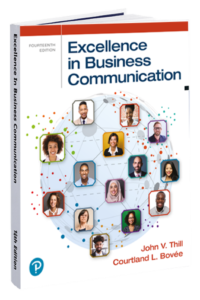
Why Excellence in Business Communication Is the Perfect Textbook for Emotionally Intelligent Instructors
Excellence in Business Communication is the ideal text for instructors who value emotional intelligence (EI) in teaching, as it aligns with key EI principles such as self-awareness, empathy, self-regulation, and motivation. The text fosters a learning environment where emotional awareness, interpersonal dynamics, and constructive communication thrive, mirroring the realities of today's business world. It provides a comprehensive approach to communication that goes beyond technical skills, addressing the human aspects of interaction that are critical in modern business.
For instructors who prioritize EI, this textbook offers a wealth of real-world scenarios and case studies. These activities engage students in reflective and interactive learning, encouraging them to apply EI skills like active listening, empathy, conflict resolution, and social skills. The text goes beyond technical communication by helping students understand and navigate the emotional and psychological dynamics that shape professional interactions, making it an essential resource for fostering emotional intelligence alongside communication proficiency.
The textbook's structure also supports emotionally intelligent teaching through interactive discussions, group activities, and reflective exercises. These tools help instructors foster a positive, inclusive classroom environment, reinforcing student engagement, trust, and skill-building through growth-oriented, empathetic feedback. This encourages students to actively participate, develop interpersonal skills, and build confidence in their communication abilities.
Excellence in Business Communication is more than just a textbook for teaching communication skills—it’s a resource that supports the development of emotional intelligence in both instructors and students. By offering emotionally intelligent learning experiences, it equips students with the tools needed to foster meaningful relationships, navigate complex social interactions, and develop the emotional resilience critical for success in the modern business environment.
References
Brackett, M. A., Palomera, R., Mojsa-Kaja, J., Reyes, M. R., & Salovey, P. (2010). "Emotion-regulation ability, burnout, and job satisfaction among British secondary-school teachers." Psychology in the Schools, 47(4), 406-417.
Cornelius-White, J. (2007). "Learner-centered teacher-student relationships are effective: A meta-analysis." Review of Educational Research, 77(1), 113-143.
Goleman, D. (1995). Emotional Intelligence. Bantam Books.
Jennings, P. A., & Greenberg, M. T. (2009). "The prosocial classroom: Teacher social and emotional competence in relation to student and classroom outcomes." Review of Educational Research, 79(1), 491-525.
Kunter, M., Tsai, Y. M., Klusmann, U., Brunner, M., Krauss, S., & Baumert, J. (2008). "Students' and mathematics teachers' perceptions of teacher enthusiasm and instruction." Learning and Instruction, 18(5), 468-482.
Lopes, P. N., Grewal, D., Kadis, J., Gall, M., & Salovey, P. (2006). "Evidence that emotional intelligence is related to job performance and affect and attitudes at work." Psicothema, 18, 132-138.
O'Keeffe, P. (2013). "A sense of belonging: Improving student retention." College Student Journal, 47(4), 605-613.
Reyes, M. R., Brackett, M. A., Rivers, S. E., White, M., & Salovey, P. (2012). "Classroom emotional climate, student engagement, and academic achievement." Journal of Educational Psychology, 104(3), 700-712.
Salovey, P., & Mayer, J. D. (1990). "Emotional intelligence. Imagination, Cognition and Personality," 9(3), 185-211.
Schonert-Reichl, K. A. (2017). "Social and emotional learning and teachers."The Future of Children, 27(1), 137-155.
Sutton, R. E., & Wheatley, K. F. (2003). "Teachers' emotions and teaching: A review of the literature and directions for future research." Educational Psychology Review, 15(4), 327-358.
Wong, C. S., Wong, P. M., & Peng, K. Z. (2010). "Effect of middle-level leader and teacher emotional intelligence on school teachers' job satisfaction: The case of Hong Kong." Educational Management Administration & Leadership, 38(1), 59-70.
Zins, J. E., Weissberg, R. P., Wang, M. C., & Walberg, H. J. (Eds.). (2004). "Building academic success on social and emotional learning: What does the research say?" Teachers College Press.
The Frictionless Classroom: Transforming Business Communication Instruction for the Digital Age
Friction from outdated methods hinders business communication education, but a frictionless classroom empowers student success.
In today's fast-paced business world, communication is not just a skill; it's a superpower. The ability to articulate ideas clearly, persuade effectively, and collaborate seamlessly is a key differentiator for success. Yet, in many classrooms, the teaching of business communication can feel more like a struggle than a launchpad. Outdated methods, a disconnect between theory and practice, and a lack of clarity can create a frustrating "friction" that hinders both student engagement and effective learning.
Imagine a classroom where learning business communication is not just a chore, but a thrilling adventure. Imagine students energized by the relevance of their studies, empowered by practical application, and equipped with the digital tools they'll use daily. This is the vision of a "frictionless classroom" – a space where the barriers to mastering business communication are dismantled, and students emerge ready to thrive in the real world. This is not simply about improving educational efficiency; it's about unlocking the true potential of business communication education and empowering a new generation of confident, skilled communicators who are ready to lead.
The Roadblocks to Effective Business Communication
The challenges hindering the effective teaching of business communication are multifaceted and often deeply rooted in the way we approach education itself. Take a moment to picture a student struggling to see the relevance of a dusty textbook in an age of instant messaging and dynamic social media. Imagine a student bewildered by a lack of clarity around expectations or confused by an instructor's reliance on outdated tools. These are not isolated incidents; they are symptoms of a broader disconnect between traditional teaching methods and the realities of the modern business world.
The roadblocks to effective communication education are many, but they can be categorized as follows:
Outdated Course Materials: Many curricula cling to traditional communication formats like formal letters and memos, failing to reflect the reality of today's digital workplaces. This disconnect makes learning feel irrelevant and hinders engagement. Students may find themselves bored and unmotivated, unable to see how the skills they are learning will apply to their future careers. They might ask, "Why am I spending time learning how to write a formal memo when I'll be communicating primarily through email and social media in my professional life?" This disconnect between the curriculum and the real world erodes motivation and hinders true learning.
Misaligned Expectations and Communication: Fuzzy objectives, unclear instructions, and a lack of open communication between students and instructors create uncertainty and frustration. Students might feel lost, unsure of what is expected of them, or hesitant to ask for clarification, leading to misunderstandings and a lack of confidence in their abilities. This can also lead to a lack of trust between students and instructors, as students feel they are not being given the support they need to succeed.
Technological Gaps: The rapid pace of technological change often leaves students and instructors struggling to keep up. Students may be unfamiliar with the tools they will use in their careers, while instructors might not fully leverage the power of these tools in the classroom. The result can be a frustrating disconnect between the theoretical knowledge gained in class and the practical skills required in the modern workplace. Imagine a student struggling to create a professional presentation using video conferencing tools, only to discover they have never been taught how to use these essential technologies effectively.
Information Overload: A bombardment of theoretical concepts without sufficient time for practical application can leave students feeling overwhelmed and disengaged. This can lead to students struggling to retain information, feeling overwhelmed, and lacking the confidence to apply the concepts in real-world scenarios. Imagine a student trying to process complex communication models without the opportunity to practice these concepts in real-world scenarios.
The Theory-Practice Disconnect: Students often struggle to see how abstract communication models translate into real-world scenarios. Without practical experience, theoretical concepts can remain distant and ineffective. Students might find themselves unable to connect the dots between the textbook and their everyday lives, leading to a feeling of disconnect and a lack of motivation to truly master the material. Imagine a student learning about persuasion techniques without ever having the chance to craft a persuasive email or present a compelling argument to a group.
Building a Frictionless Classroom: A Path Forward
Eliminating friction in business communication education requires a fundamental shift in mindset and approach. Instead of clinging to outdated practices, educators must embrace the dynamic nature of the modern business world and equip students with the tools and skills they need to succeed. This requires a proactive and innovative approach to teaching and learning:
Embrace the Digital Revolution: Modernize curricula by emphasizing digital communication formats, incorporating real-world case
Update your approach: Teach students the digital communication skills they need to succeed in today's workplace
studies, and integrating digital tools that are essential to today's workplaces. This could include email etiquette, social media strategy, and virtual presentations, all taught through the lens of practical application. By incorporating these modern communication methods, the curriculum becomes more relevant and engaging, ensuring students are prepared to navigate the digital landscape of today's business world. Students should be empowered to become proficient users of digital tools and platforms that are critical to their future success.
Foster Clear and Open Communication: Establish a culture of clear communication between instructors and students. Use detailed rubrics, clear learning objectives, and regular check-ins to ensure everyone is on the same page. Encourage students to ask questions and provide feedback. This creates an open and supportive learning environment where students feel comfortable expressing their questions and concerns, leading to a better understanding of expectations and a more effective learning experience.
Leverage Digital Tools Effectively: Don't just introduce technology; master it! Provide comprehensive training on digital tools, select a consistent core set of platforms, and integrate technology seamlessly throughout the course. By effectively incorporating digital tools, instructors can create a learning environment that mirrors the modern workplace, preparing students for the digital communication realities they will encounter in their careers. The goal should be to go beyond simply introducing technology and to fully integrate it into the learning process, ensuring that students develop a high level of proficiency with the tools they will use in their professional lives.
Balance Information Delivery: Break down complex concepts into manageable chunks, pair theory with immediate practice, and incorporate opportunities for reflection. This allows students to absorb information in digestible pieces, apply their knowledge immediately, and have the chance to critically think about what they are learning, leading to deeper understanding and better retention.
Bridge the Gap Between Theory and Practice: Design assignments that mimic workplace scenarios, use real-world case studies, and implement simulations that allow students to test their skills in a safe environment. By providing opportunities for practical application, students can see the relevance of their studies and develop the confidence to apply their skills in real-world settings. The classroom should become a laboratory for testing communication strategies and developing the skills that will be crucial for success in a professional environment.
Foster Collaboration and Feedback: Encourage peer collaboration, group projects, and peer reviews to build communication skills and allow students to learn from each other. Create a culture of open dialogue and constructive feedback. By encouraging collaboration and feedback, students learn from each other, develop their communication skills in a safe and supportive environment, and gain valuable insights from different perspectives. This collaborative approach mirrors the team-based nature of most workplaces and allows students to refine their communication skills through constructive feedback.
The Rewards of a Frictionless Classroom
Imagine a classroom brimming with engaged students who are energized by their learning. Imagine a classroom where students develop the skills they need to thrive in the real world. The benefits of a frictionless classroom are profound and far-reaching:
Enhanced Engagement and Retention: Students who see the relevance of their studies, are challenged by practical assignments, and are encouraged to participate actively are more likely to be engaged, motivated, and retain the skills they learn. This creates a more positive learning experience, fostering a sense of purpose and accomplishment in students, leading to greater motivation and a stronger desire to continue learning.
Improved Communication Skills: Students who have the opportunity to practice their skills in real-world contexts, receive feedback from their peers and instructors, and are encouraged to experiment with new communication approaches develop a deeper understanding of the art of communication. This hands-on approach allows students to develop their communication skills beyond theoretical knowledge, fostering confidence, creativity, and a deeper understanding of the nuances of effective communication.
Greater Alignment with Workforce Needs: Graduates who are equipped with the digital tools, practical experience, and adaptable skillset needed in today's workplace are better prepared to succeed in their careers and contribute to the success of their organizations. This approach ensures that students are prepared to enter the workforce with the skills and knowledge needed to succeed in today's dynamic and ever-changing business environment. This is not simply about teaching specific skills, but about fostering a mindset of adaptability and continuous learning, crucial attributes for success in the long term.
The future of business communication education lies not in clinging to outdated practices, but in embracing the dynamic nature of the modern business world. The "frictionless classroom" is not just a vision – it's a pathway to unlocking the full potential of business communication education and empowering a new generation of confident, skilled communicators who are ready to lead. It's a call to action for educators to create a more dynamic, relevant, and engaging learning experience, one that equips students with the skills they need to not only succeed in their first job but to thrive in the ever-evolving landscape of the business world.
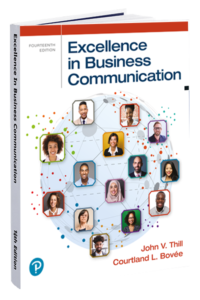
Excellence in Business Communication is the ideal textbook for instructors looking to implement a "frictionless classroom" approach, as described in “The Frictionless Classroom: Transforming Business Communication Education for the Digital Age.” Both the text and the article emphasize removing barriers to effective learning, creating a seamless educational experience that better prepares students for the modern business world.
Here’s how Excellence in Business Communication aligns with the key principles of a frictionless classroom:
1. Embracing the Digital Revolution
The article advocates for updating curricula to reflect the digital tools and communication formats prevalent in today’s workplaces, such as emails, social media, and virtual presentations. Excellence in Business Communication offers this very approach by incorporating digital communication strategies into its lessons. It provides students with real-world applications that go beyond traditional memos and letters, aligning the content with the skills they will need in their professional careers. By utilizing interactive tools, multimedia cases, and online simulations through platforms like MyLab, instructors can seamlessly integrate practical, modern communication tools into the classroom experience.
2. Clear and Open Communication
The article highlights the importance of clear learning objectives and consistent communication between instructors and students. Excellence in Business Communication supports this with detailed chapter objectives, clear learning paths, and rubrics that help students understand exactly what is expected of them. The textbook's integration with digital learning platforms allows for regular feedback loops, helping students stay engaged and reducing the "friction" caused by unclear expectations.
3. Leveraging Digital Tools
Both the article and the textbook stress the importance of mastering digital tools. Excellence in Business Communication integrates features such as real-time collaboration, digital feedback tools, and role-playing scenarios that simulate real-world business environments. These tools allow students to gain hands-on experience with the technology they’ll use in the workplace, helping to bridge the gap between theoretical knowledge and practical application.
4. Balancing Theory and Practice
In the frictionless classroom, theoretical concepts are immediately paired with practical applications. Excellence in Business Communication does this by providing real-world case studies, workplace scenarios, and simulations. Students learn communication theories and immediately put them into practice, whether by drafting emails, preparing presentations, or solving case-based challenges, all of which mirror the complexity of the modern business environment.
5. Bridging the Theory-Practice Gap
The article calls for assignments that mimic workplace scenarios to help students see the relevance of their studies. Excellence in Business Communication excels in this area by including exercises like on-the-job simulations and role-playing activities. These help students practice communication strategies in settings that closely resemble the challenges they will face in their careers, reinforcing the relevance and applicability of their lessons.
6. Encouraging Collaboration and Feedback
In a frictionless classroom, collaboration and peer feedback are crucial to fostering better communication skills. The textbook supports this through interactive learning tools that allow for peer reviews, group projects, and collaborative problem-solving. Students are encouraged to critique each other's work, thereby improving their own communication abilities in a supportive and constructive environment.
Key Takeaways
Excellence in Business Communication embodies the frictionless classroom concept by transforming traditional communication education into an engaging, modern, and practical learning experience. Its digital integration, focus on real-world skills, and emphasis on collaboration all align with the call for a frictionless, student-centered approach. By using this text, instructors can equip their students with the tools, clarity, and skills they need to succeed in today’s fast-paced business environment, reducing friction and unlocking their potential as confident, skilled communicators.
Read more
Unseen Forces Shaping the Future of Teaching Business Communication

Teaching business communication is shaped by both obvious elements and subtle influences beneath the surface.
Hidden Forces Shape Business Communication Teaching, Influencing Course Content and Methods
In the ever-evolving field of business communication, educators are influenced by a variety of factors, both visible and invisible. While some influences, such as course content or textbook choices, are immediately apparent, many unseen forces operate beneath the surface, shaping how instructors approach teaching. These indirect forces range from institutional culture to global industry trends, and they play a significant role in determining what and how students learn in business communication courses. Understanding these hidden factors can empower instructors to adapt their teaching practices and create more effective, engaging learning environments.
1. Institutional Culture and Policies
The ethos and values of an educational institution often dictate how business communication is taught. Policies related to grading, classroom behavior, and attendance influence instructors' teaching methods and students' learning experiences. For example, institutions that prioritize experiential learning may encourage more project-based assignments, while more traditional institutions might emphasize lectures and exams.
2. Technological Advancements
As new technologies emerge, they reshape communication practices in the business world and, consequently, what is taught in classrooms. Instructors must stay up-to-date with the latest tools, such as AI-driven communication platforms or collaborative tools like Slack and Zoom. These technological shifts push educators to teach not just theory but practical skills students will need in a rapidly changing digital landscape.
3. Industry Trends
Global shifts in business practices—such as the rise of remote work, corporate social responsibility, or data-driven decision-making—exert a direct influence on the skills and knowledge business communication students need. Instructors must adapt their curriculum to reflect the latest trends, ensuring that students are well-prepared to meet industry demands. This often requires rethinking course materials and embracing emerging topics like sustainability communication or crisis management.
4. Student Expectations and Preferences
Modern students, particularly Gen Z, prefer interactive, digital, and fast-paced learning environments. They expect real-world applications of knowledge, multimedia content, and hands-on experiences that reflect their digital native backgrounds. To meet these expectations, instructors must incorporate technologies like video content, gamification, and peer collaboration into their lessons to maintain engagement and relevance.
5. Accreditation Standards
Accreditation bodies often impose strict standards on business programs, indirectly influencing the teaching of communication skills. These standards may dictate learning outcomes, competencies, and assessment methods, which instructors must align with to ensure program quality and accreditation compliance. This can result in a balancing act between meeting external requirements and maintaining instructional creativity.
6. Socioeconomic Factors
Students come from diverse socioeconomic backgrounds, and this often affects how they approach their education. Those who are balancing work and studies may prefer online or flexible learning models, while others may struggle with access to resources like textbooks or software. Instructors must consider these dynamics and create inclusive environments that accommodate varying levels of access and engagement.

Diverse classrooms demand cultural competence, adapting to varied communication styles for effective cross-cultural teaching.
7. Cultural Diversity
Increasing diversity in classrooms requires instructors to be sensitive to different communication styles, norms, and cultural expectations. Multicultural classrooms provide an opportunity to teach cross-cultural communication but also require careful navigation to avoid misunderstandings or miscommunication. Educators must be culturally competent and flexible, adapting their approach to meet the needs of a diverse student body.
8. Corporate Partnerships and Sponsorships
Collaboration between educational institutions and corporations can shape what is taught in business communication courses. For example, a partnership with a tech company may lead to an emphasis on digital communication tools, while a financial institution's involvement might steer focus toward corporate communication and investor relations. While these partnerships can provide valuable real-world insights, they can also influence the direction of the curriculum in subtle ways.
9. Social Media and Communication Platforms
The rise of platforms like LinkedIn, Instagram, and TikTok has revolutionized the way businesses and professionals communicate. As a result, instructors must teach students how to navigate these platforms effectively, from personal branding to professional networking. Social media also influences teaching methods, as educators incorporate digital platforms into their lessons to help students develop practical communication skills.
10. Unconscious Bias and Instructor Beliefs
Every instructor brings their own experiences, beliefs, and biases into the classroom, often unconsciously shaping their teaching approach. These biases can affect how instructors assess students, how they prioritize content, and how they engage with certain topics. Being aware of these biases and actively working to mitigate them can create a more equitable and inclusive learning environment for all students.
11. Governmental and Educational Policies
Broader policy decisions, such as education funding, curriculum mandates, and federal regulations, can have a significant impact on teaching business communication. For instance, reduced funding may lead to larger class sizes, limiting the opportunities for personalized feedback. Similarly, new educational initiatives may require instructors to integrate specific competencies or technologies into their courses.
12. Crisis Events, Such as Pandemics and Economic Shifts
Global crises like the COVID-19 pandemic or economic recessions often disrupt traditional ways of teaching and practicing business communication. These events force instructors to pivot quickly, adapting their curriculum to address remote communication, crisis management, and digital-first strategies. In turn, students gain exposure to real-world problem-solving in uncertain environments, enhancing their preparedness for the workforce.
13. Peer and Industry Networks
Instructors are influenced by their professional networks, including colleagues, academic associations, and industry experts. These networks serve as a source of inspiration and best practices, helping instructors stay current on the latest trends in business communication. Sharing insights and experiences with peers can lead to the adoption of new teaching methods or tools that improve student outcomes.
14. Hidden Curricula
Beyond the formal curriculum, students absorb implicit lessons about communication norms, professional etiquette, and power dynamics. This "hidden curriculum" can shape their understanding of the business world and influence their communication skills. For example, an instructor's leadership style may teach students more about workplace hierarchy and collaboration than the explicit lesson itself.
15. Algorithmic and Data-Driven Teaching Tools
The rise of AI-powered learning platforms and data analytics has introduced new ways to assess student performance and tailor instruction. These tools can help instructors identify gaps in student knowledge, personalize feedback, and optimize lesson plans based on real-time data. However, the reliance on algorithmic tools also raises questions about equity, privacy, and the balance between human judgment and automated decision-making.
Key Takeaways
The teaching of business communication is shaped by a complex web of unseen forces and indirect influences. From institutional culture to technological advancements, these factors operate behind the scenes, influencing how instructors approach their work and how students engage with the material. By recognizing and understanding these hidden influences, educators can adapt their teaching strategies to create more effective, inclusive, and relevant learning experiences. As business communication continues to evolve, so too must the methods and approaches used to teach it, ensuring that students are prepared for the dynamic challenges of the modern business world.
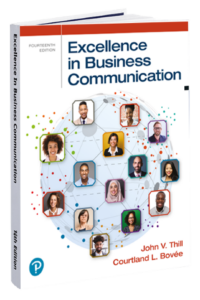
Why Excellence in Business Communication Is the Ideal Text for Business Communication Instructors
Excellence in Business Communication stands out as the ideal text for instructors because it aligns with the unseen forces shaping modern business communication instruction. This textbook addresses the evolving needs of students and the business landscape by integrating the latest industry trends, such as digital communication, social media, and global collaboration. It provides practical tools that prepare students for the real-world challenges they will face, reflecting the technological advancements that instructors must incorporate into their teaching.
Excellence in Business Communication offers a flexible, adaptable curriculum that allows instructors to meet diverse student expectations and preferences. The text is rich with multimedia content and hands-on exercises, which cater to the interactive, fast-paced learning styles preferred by today’s students. This responsiveness to modern teaching challenges makes it ideal for multicultural classrooms, helping instructors navigate cultural diversity and unconscious biases that can affect learning outcomes.
The textbook’s emphasis on practical application is also aligned with the accreditation standards and institutional policies that shape course design. It ensures that students not only grasp key communication concepts but can also apply them effectively in real-world business settings.
Its focus on crisis communication and digital transformation reflects the need to adapt to crisis events and industry trends, ensuring that students are equipped to handle unpredictable situations in the business world. In short, Excellence in Business Communication is an invaluable resource for instructors seeking to create relevant, engaging, and impactful learning experiences.
Read more
